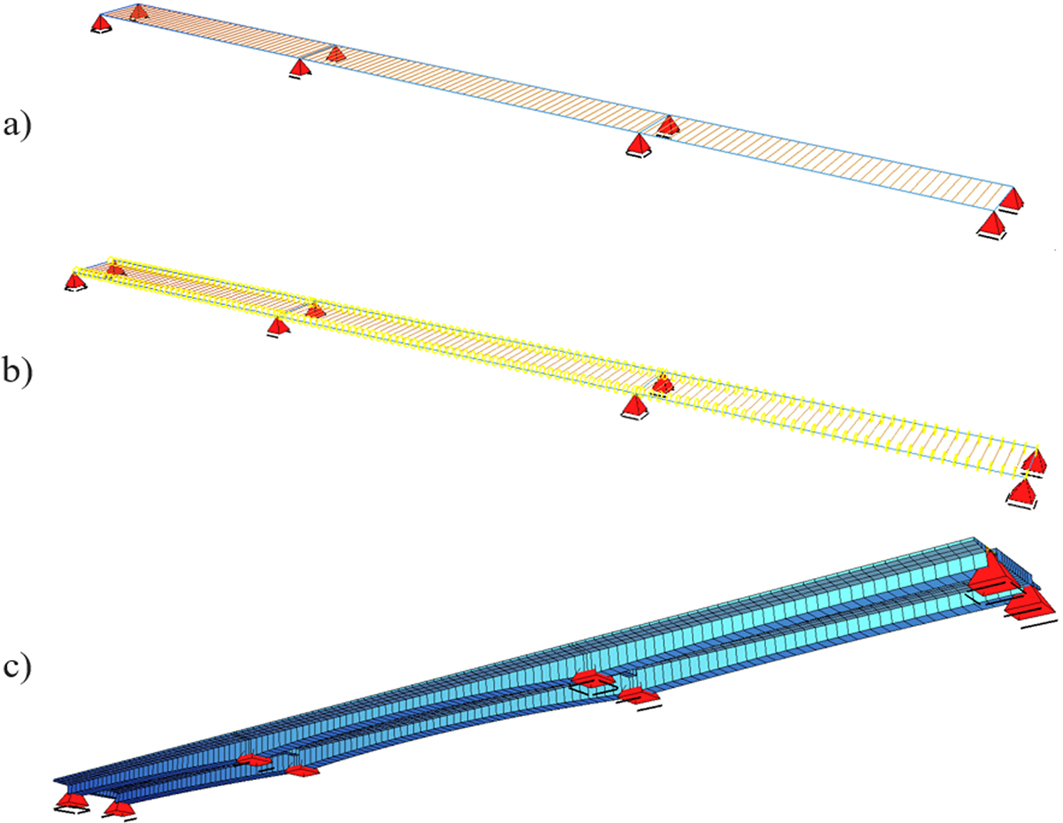Influence of the type of numerical model a prestressed concrete bridge on the determination of its internal forces and displacements
1
Wydział Inżynierii Lądowej, Politechnika Warszawska, Poland
Submission date: 2023-02-06
Final revision date: 2023-07-13
Acceptance date: 2023-07-25
Publication date: 2024-04-02
Corresponding author
Radosław Oleszek
Wydział Inżynierii Lądowej, Politechnika Warszawska, Armii Ludowej, 16, Warszawa, Poland
Wydział Inżynierii Lądowej, Politechnika Warszawska, Armii Ludowej, 16, Warszawa, Poland
Archives of Civil Engineering 2024;70(1):155-167
KEYWORDS
numerical modelsprestressed concrete bridgescomputer analysis of superstructuretransverse distribution of load
TOPICS
ABSTRACT
Static analyses of bridge structures are currently performed using the finite element method (FEM). Depending on the geometry of the structure and the technically required accuracy of calculations, different levels of discretization of these structures are used in their design. In the design process, beam grillage models (denoted e1, p2), shell models (denoted e2, p2) or shell-beam models (denoted e1 + e2, p3) are often used. Solid models (denoted e3 + p3) are mostly used in advanced analyses, having frequently a scientific character.
It is shown that there is an impact of the applied types of the numerical model (i.e., degree of complexity, degree of discretization, accuracy of the model) of the road bridge on the calculated values of bending moments and displacements, which indirectly affects the global safety coefficient of the designed bridge structure. The main purpose of the calculations is to examine the discrepancies of analyzed internal forces and displacements depending of the type of numerical model used. The calculated values are referred to the results taken from the field tests of the existing bridge denoted MS 03, which is a continuous beam structure with the three spans 37,50 + 46,75 + 37,50 m made of prestressed concrete and with variable beam depth. On the basis of numerical simulations, the paper provides author's recommendations for computer modeling of similar bridges.
We process personal data collected when visiting the website. The function of obtaining information about users and their behavior is carried out by voluntarily entered information in forms and saving cookies in end devices. Data, including cookies, are used to provide services, improve the user experience and to analyze the traffic in accordance with the Privacy policy. Data are also collected and processed by Google Analytics tool (more).
You can change cookies settings in your browser. Restricted use of cookies in the browser configuration may affect some functionalities of the website.
You can change cookies settings in your browser. Restricted use of cookies in the browser configuration may affect some functionalities of the website.




